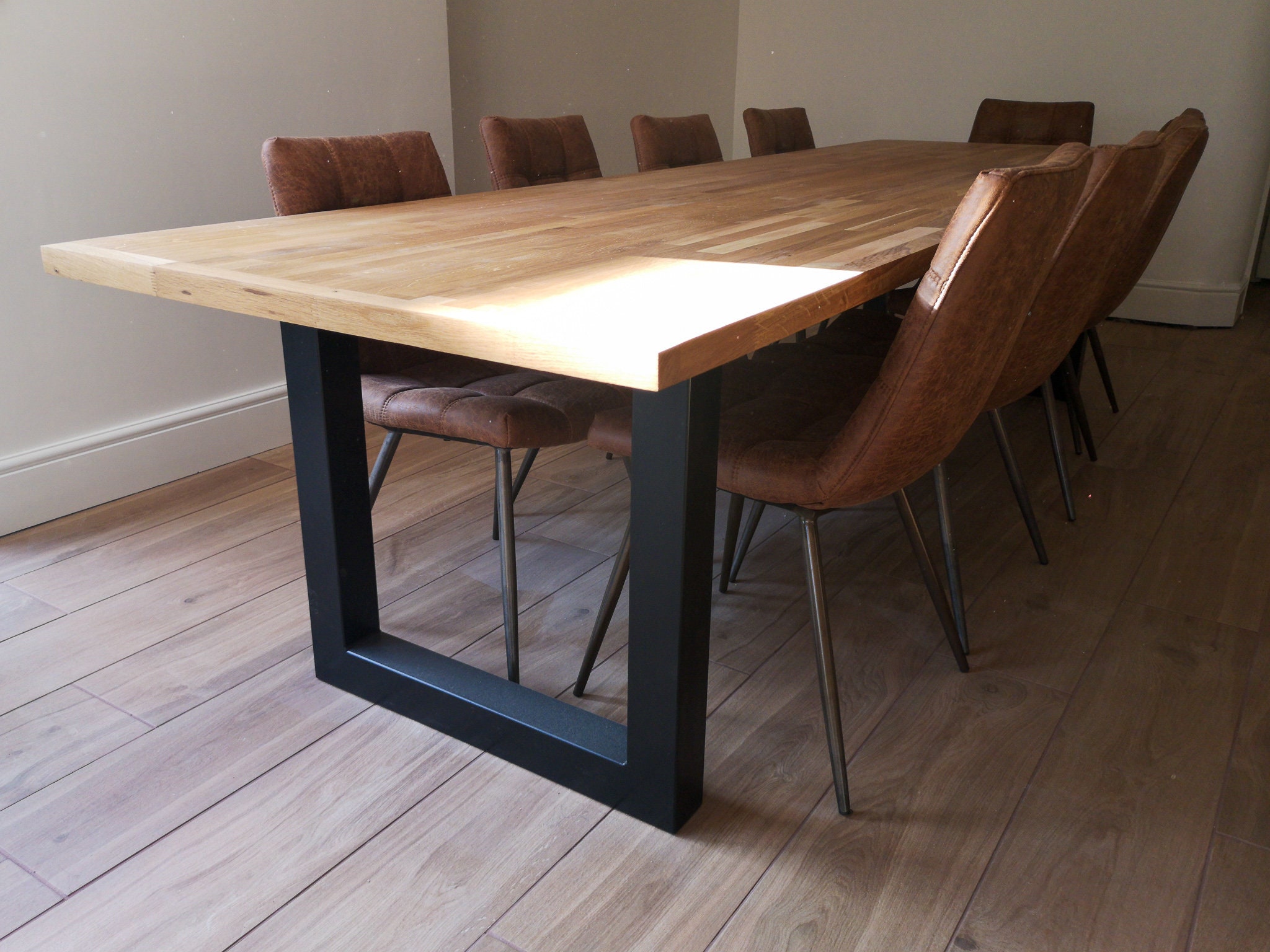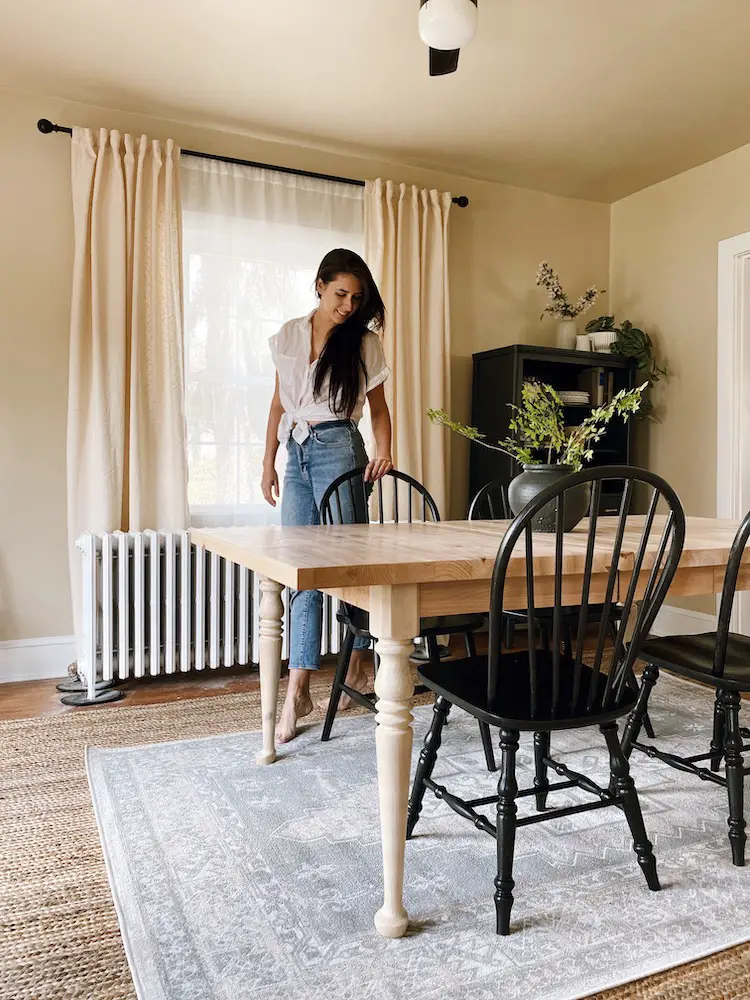Dining Room Table Legs: What to Consider Prior To You Buy
Dining Room Table Legs: What to Consider Prior To You Buy
Blog Article
A Detailed Consider Dining Table Leg Styles: Locating the Suitable Suit
Picking the right dining table leg design is essential for both aesthetic appeal and useful capability. For those with bigger tables, trestle legs guarantee durable assistance, whereas barrette legs introduce a mid-century modern-day ambiance with their minimalist layout. The x-shaped legs blend modern design with boosted stability.
Traditional 4 Legs
Among the numerous types of eating table leg styles, the traditional four-leg design remains a classic selection for many houses. 4 legs offer balanced assistance, making certain the table remains stable and capable of bearing significant weight (dining room table legs).
From a visual point of view, the traditional four-leg design can be conveniently adapted to various indoor designs. Whether crafted from wood, metal, or a combination of products, these legs can be elaborately sculpted, sleek and minimalistic, or anything in between. Their versatility enables them to match both rustic and contemporary setups seamlessly.
In addition, the uncomplicated framework of the four-leg layout assists in simplicity of motion and placement within an area. Unlike more complicated bases, this style minimizes blockages, supplying enough legroom for restaurants. In summary, the standard four-leg table leg style marries withstanding style with practical performance, making it a sharp selection for those looking for both form and feature in their dining furnishings.
Stand Base
Often celebrated for its stylish and space-efficient layout, the pedestal base is a distinguished option to the standard four-leg arrangement in dining table leg styles. This unique base normally includes a solitary main column sustaining the table top, which can vary in form, from ornately sculpted timber to smooth, modern-day steel. One of the key benefits of the stand base is its capability to optimize legroom and seating versatility. Without edge legs, restaurants are managed better liberty of activity, making it a suitable selection for round and oval tables that promote even more intimate and inclusive events.
Moreover, the pedestal base's central support can manage substantial weight, enabling for the use of much heavier tabletops, such as marble or thick hardwood. This stamina combined with its aesthetic versatility makes the stand base a popular selection in both traditional and contemporary indoor setups. It can effortlessly incorporate with various layout styles, from classic style to minimalist modernity. The central column itself provides a canvas for complex styles and artistic expressions, including a component of visual interest below the table. In summary, the stand base incorporates functionality snappy, making it an improved and practical choice for diverse dining environments.
Trestle Legs
Trestle legs supply a durable and ageless structure for dining tables, characterized by their horizontal cross-bracing and strong support beams. Stemming from middle ages times, this style has developed yet preserved its necessary structure, making it a seasonal fave in both standard and contemporary setups. The central trestle beam of useful link light, commonly sustained by 2 or even more vertical blog posts, provides remarkable stability, permitting larger table sizes without the requirement for extra legs.
A significant advantage of trestle leg tables is the adequate legroom they supply. Unlike tables with four edge legs, the absence of blockages at the table's edges gives unblocked space for chairs and diners, boosting convenience and accessibility. This makes trestle tables excellent for accommodating bigger gatherings, whether in a dining-room or a banquet hall.
The visual convenience of trestle legs is noteworthy. Available in a range of materials such as explanation timber, metal, and composite, they can be completed to complement a vast array of interior styles. From rustic farmhouse to streamlined modern layouts, trestle legs can be customized to fit private tastes. Their enduring appeal and useful advantages make trestle legs a compelling option for those looking for both style and functionality in their table.
Barrette Legs

The appeal of barrette legs depends on their simplicity and versatility - dining room table legs. Available in a variety of materials, including steel and brass, they can be finished in countless shades to enhance different interior styles. Whether coupled with a rustic wooden tabletop or a modern glass surface, barrette legs effortlessly blend functionality with a touch of vintage charm
Sturdiness is one more remarkable attribute of hairpin legs. Despite their Recommended Reading delicate look, these legs are engineered to birth significant weight, making sure the table remains secure and safe. Additionally, they are reasonably very easy to install, making them a preferred option for DIY fanatics and expert furniture makers alike.
X-Shaped Legs

Built from products such as steel, wood, or a combination of both, X-shaped legs can be customized to match different style preferences. Steel legs usually lend a streamlined and commercial feel, suitable for loft-style homes and modern dining spaces. On the various other hand, wooden X-shaped legs offer a warmer, a lot more rustic appeal, ideal for farmhouse or eclectic interiors. The convenience in products allows house owners to tailor their table to much better fit their total layout system.
In addition, the design behind X-shaped legs ensures even weight circulation, decreasing the risk of wobbling and improving resilience. This makes them specifically appropriate for larger eating tables that need additional support. In essence, X-shaped legs blend useful engineering with contemporary looks, making them a classic choice for diverse dining environments.
Conclusion
An extensive understanding of dining table leg styles reveals the distinctive attributes and benefits of each layout. Trestle legs make certain durable assistance for larger tables, and hairpin legs introduce a mid-century contemporary aesthetic.
Report this page